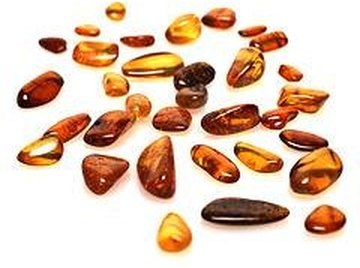
Amber stone isn't a true gemstone. Rather, amber is fossilized tree resin that can be 30 to 90 million years old. Amber has been highly prized for its warmth and beauty, and has been carved into jewelry and traded among cultures for thousands of years.
Identification
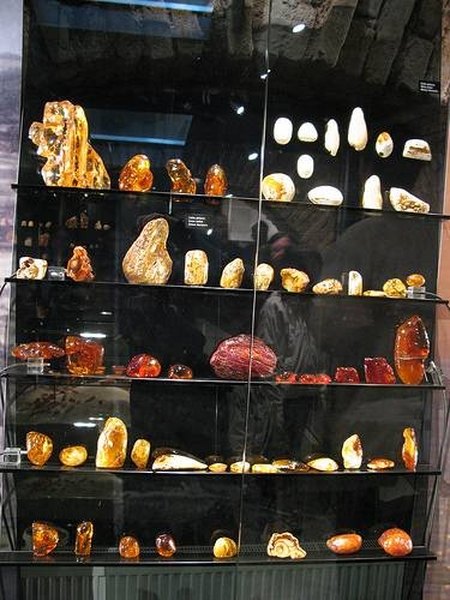
Traditional amber stone is a hard, golden-yellow to brownish-yellow translucent resin. In rare forms it can be blue or green. It is considered an organic gem, as it came from ancient tree resin. It is softer than stone and can be easily scratched. Because amber was created by living trees, the stones are often found with interesting inclusions---insects, seeds, feathers and bubbles. Resin forms most often in conifer trees as the result of an injury, and is not to be confused with tree sap. You can tell the difference between real amber and fake by rubbing the amber briskly with a cloth. Real amber will produce static electricity and a light camphor smell. Real amber will also float in salt water, while fake amber will sink. Of course, this only works with unmounted stones.
Geography
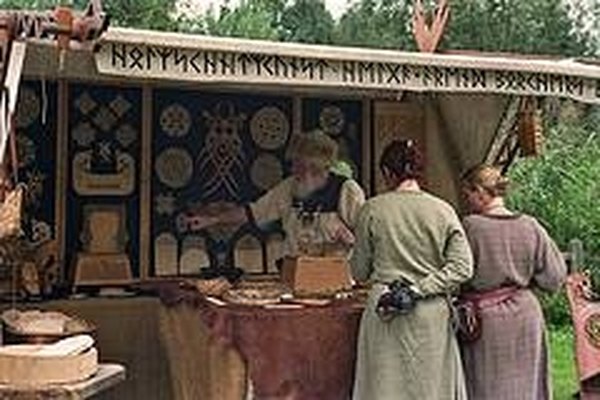
The Baltic Sea area has been a source of amber since ancient times. Early Stone Age people used amber, which has been found in Neolithic burial sites. Vikings traded amber as far back as 800, and present-day Scandinavia is still a major exporter of the gemstone. Amber is found all over the world: in both North and South America, Sicily, Romania, Lebanon, Myanmar (Burma) and New Zealand.
Misconceptions
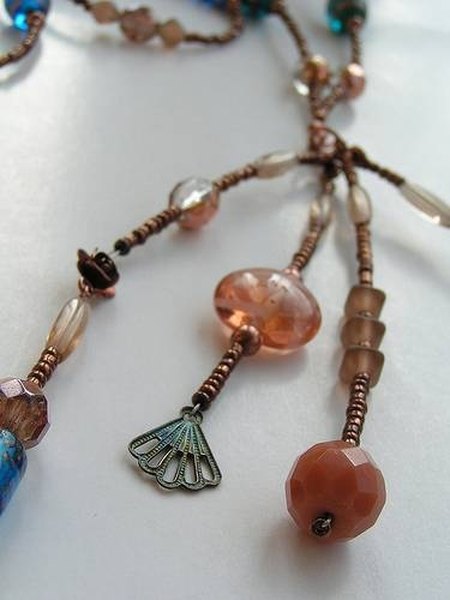
Ancient people all over the world thought that amber had medicinal properties and would grind it up and mix with honey to cure anything from asthma to the black plague. Amber stone pendents were worn for magical protection against evil, and sailors would burn amber to protect their ships from sea monsters. Mothers would burn amber near their newborns to help them grow strong. As late as the 1940s, amber bead necklaces were placed on babies to help with the pain of teething.
Care
Amber stones are very soft and should be protected from accidental chipping and scratching. Store amber jewelry in a padded box or in a cloth bag. Amber beads should be strung with knots between them to prevent the stones from rubbing and chipping each other. Never apply hairspray while wearing amber jewelry, as the chemicals in the spray can permanently cloud the stones. Harsh soaps and commercial jewelry cleaners can also harm the stone. Clean amber with lukewarm water and a soft cloth. Amber can be polished with olive oil to add shine.
Uses
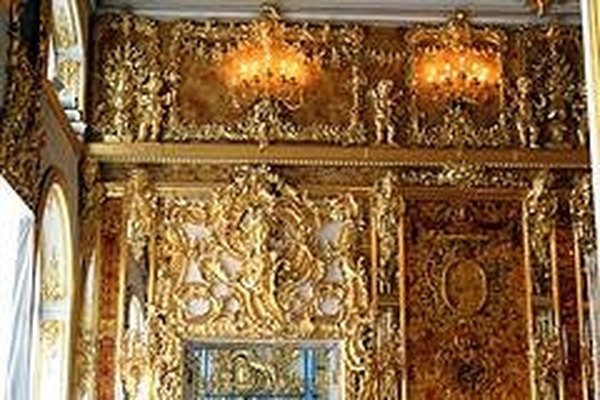
Amber stone has been used for many things beside pretty bead necklaces. Amber has been carved into art, made into teething rings, and even used to remove lint from clothes (because of its static electric properties). Amber has been burned as incense and used to make lacquer. Fine violins have been polished with amber varnish. The most opulent use of amber has to be Peter the Great's Amber Room. It was given to the Russian czar in 1716, and was considered a masterpiece of Baroque art. Catherine the Great had the room moved to her summer estate. Unfortunately, when Hitler invaded the Soviet Union in 1941 he raided the Amber Room, had it packed up and shipped to Germany. No one has seen it since. A replica of the Amber Room can be seen at Catherine Palace in Russia.
Photo Credits
Mike Cuscire, Ramón, Kristian Frisk, Madzik, Marieke Kuijjer
